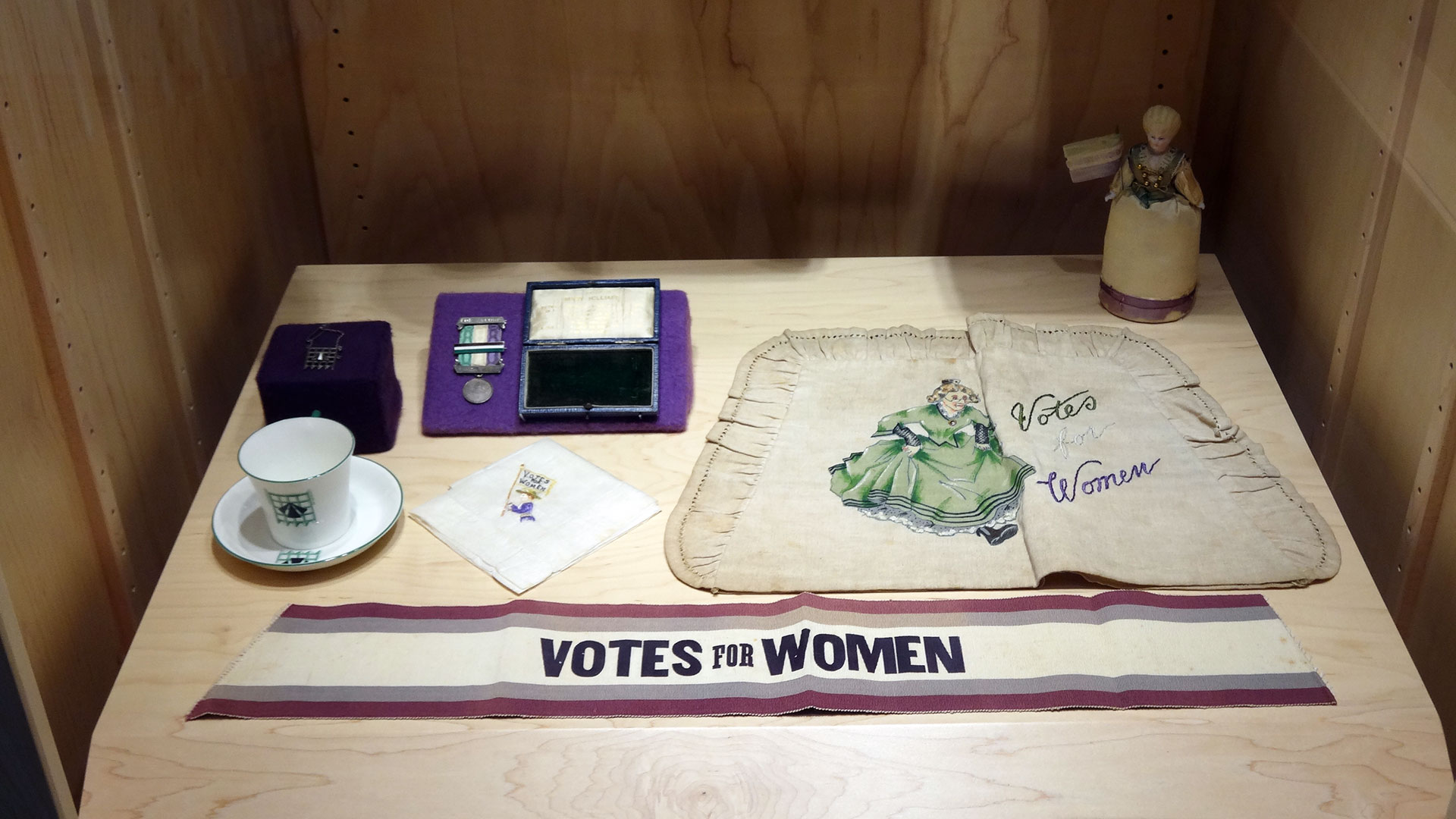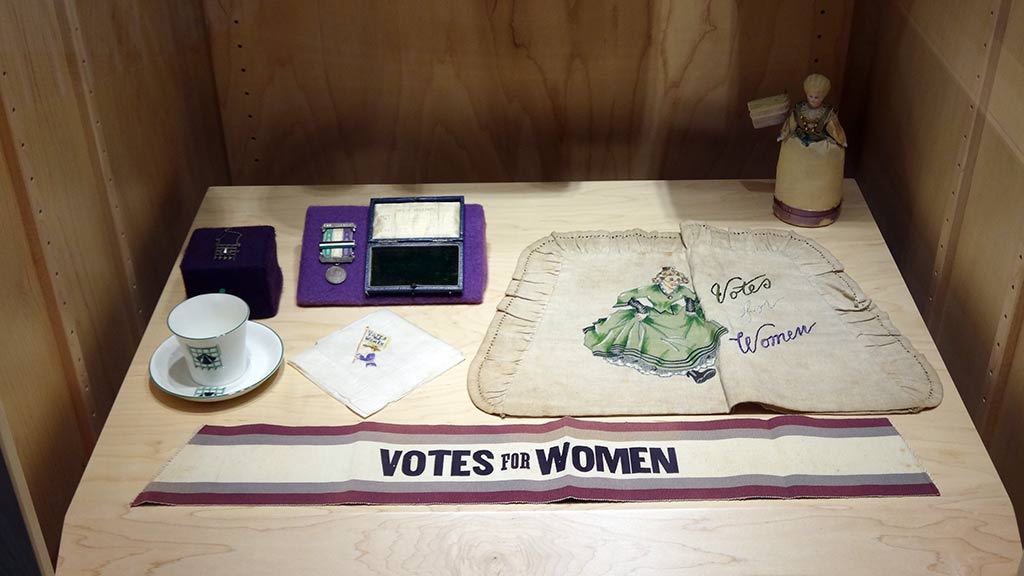
Suffrage and Campaign Memorabilia
- Duration:Temporary
- Location:Whitten Featured Object Case
(date) 5/14/2013–9/8/2013
Beginning as far back as the mid-1800s, the women’s suffrage movements in both the United States and Great Britain reached their peaks in the decades prior to World War I. Led by such notable figures as Sylvia and Emmeline Pankhurst in the UK and Alice Paul and Inez Milholland in the US, suffragettes took to the streets, waving banners in parades and engaging in more militant tactics than used in prior years.
The women’s suffrage movement in these countries is known for its use of colors and symbols. Tea sets, jewelry, and handicrafts such as handkerchiefs and pincushions bearing the colors, symbols, and slogans of the movement were made and sold. Colors, sashes, and badges tapped into the military aspect of organization that was popular leading up to and during WWI.
Active political campaigning among the populace can be traced to the 1830s, when political propaganda was actively distributed and the general population encouraged to loudly and visibly support their candidate through activities such as torchlight parades. Torches were made in a variety of styles and were another medium for sharing campaign slogans. During this same time, novelties and memorabilia were increasingly put to use in presidential campaigns. Glass whiskey flask depicting historical figures date back to the 1820s, and as the nineteenth century progressed, these flasks were adopted by presidential campaigns to promote their candidate among a wider audience.





